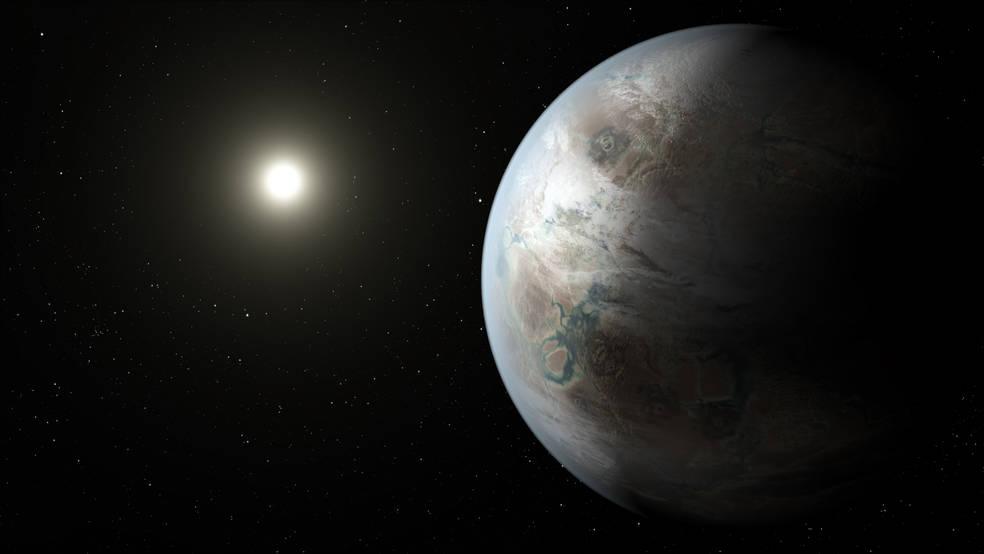There’s finally some good news about Planet Earth. No, we haven’t reversed global warming, and there are still millions of plastic water bottles and other chunks of garbage in the ocean.
But you can chill a bottle of Cristal and pop the cork because after 4.54 billion years, the engineers at NASA have finally found the Big Blue Marble’s twin. It’s not identical, but a sort of fraternal twin.
On Thursday, elated NASA officials and scientists announced that the Kepler observatory spacecraft, launched in March 2009, had spotted a planet in a distant solar system that shared many characteristics of planet Earth.
Related: NASA chief says SpaceX explosion will not deter human space flight program
The newly discovered planet is roughly the size of Earth and orbits a star similar to our Sun. It travels inside the star’s “habitable zone” – the range around a sun where it is warm enough for a liquid surface to pool. Price tag for the overall NASA program? Just $600 million.
The newly discovered planet – dubbed Kepler-452b or Earth 2.0 by scientists – is about 60 percent larger than Earth and orbits its parent star, Kepler-452, once every 385 days, just 20 days longer than it takes the Earth to circle the Sun.
The force of gravity on Kepler-452b is about twice what it is on Earth, meaning it would be difficult for a human to get around or go for a jog. Although scientists know little about the exact mass of the planet or the composition of its atmosphere, they said previous research suggests that planets the size of Kepler-452b are usually rocky – and may have active volcanos.
Most exciting of all, scientists said, is that because the exoplanet has been orbiting its sun for the better part of 6 billion years, there’s a good chance that there is some form of life. What that life could be is anybody’s guess.
While the planet is somewhat farther from its star than Earth is from the Sun, its star is brighter, which means Kepler-452b gets about the same amount of energy from its star as Earth gets from the Sun.
"This is really the first step, and humankind’s first step, to answering that question, ‘Are we alone in the Universe?’" said Jeff Coughlin, Kepler research scientist at the SETI Institute in Mountain View, California.
This is a question America’s resident genius, Stephen Hawking, wants to explore with the help of $100,000,000 from Russian entrepreneur, Yuri Milner. Together, they’re on the hunt intelligent life from other planets in the universe. Earth.2 could be it.
But don’t start packing your bags for a visit just yet. NASA scientists said that Earth’s new twin is located about 1,400 light years away – well out of reach of humankind, so far. The optimistic space agency officials noted that there are plenty of other planets closer to home that need to be explored in the coming years that might be targeted for a visit generations from now.
The Kepler mission was launched in March 2009 to determine how common Earth-like planets are throughout the Milky Way galaxy. Kepler finds alien worlds using sophisticated technology and analysis that notes the tiny dips in brightness caused when the planets cross in front of their parent stars. The mission has been highly successful and has detected more than 3,800 potential exoplanets to date.
NASA said in a statement today that exoplanets, especially small Earth-size worlds, “belonged with the realm of science fiction just 21 years ago.”
“Today, and thousands of discoveries later, astronomers are on the cusp of finding something people have dreamed about for thousands of years – another Earth.”





